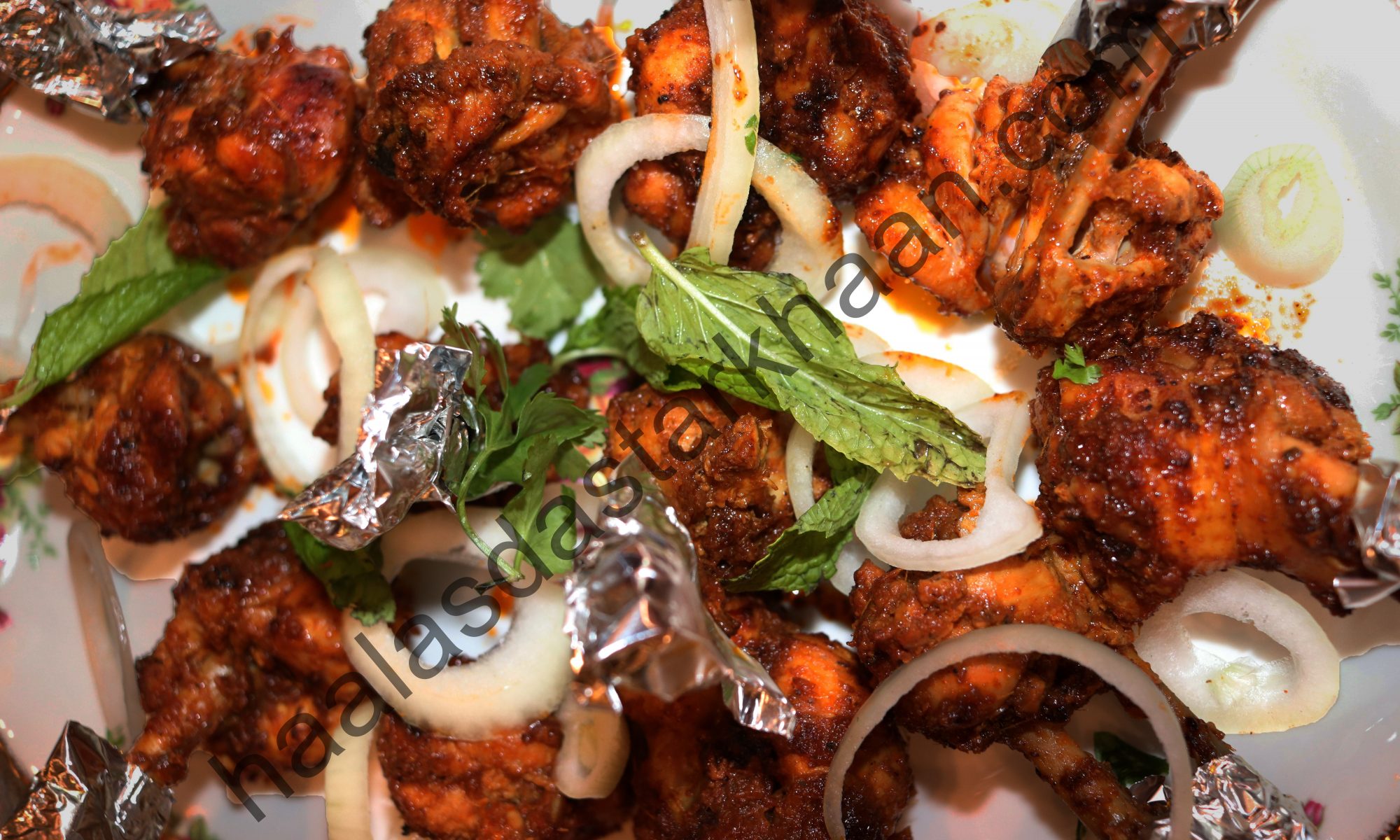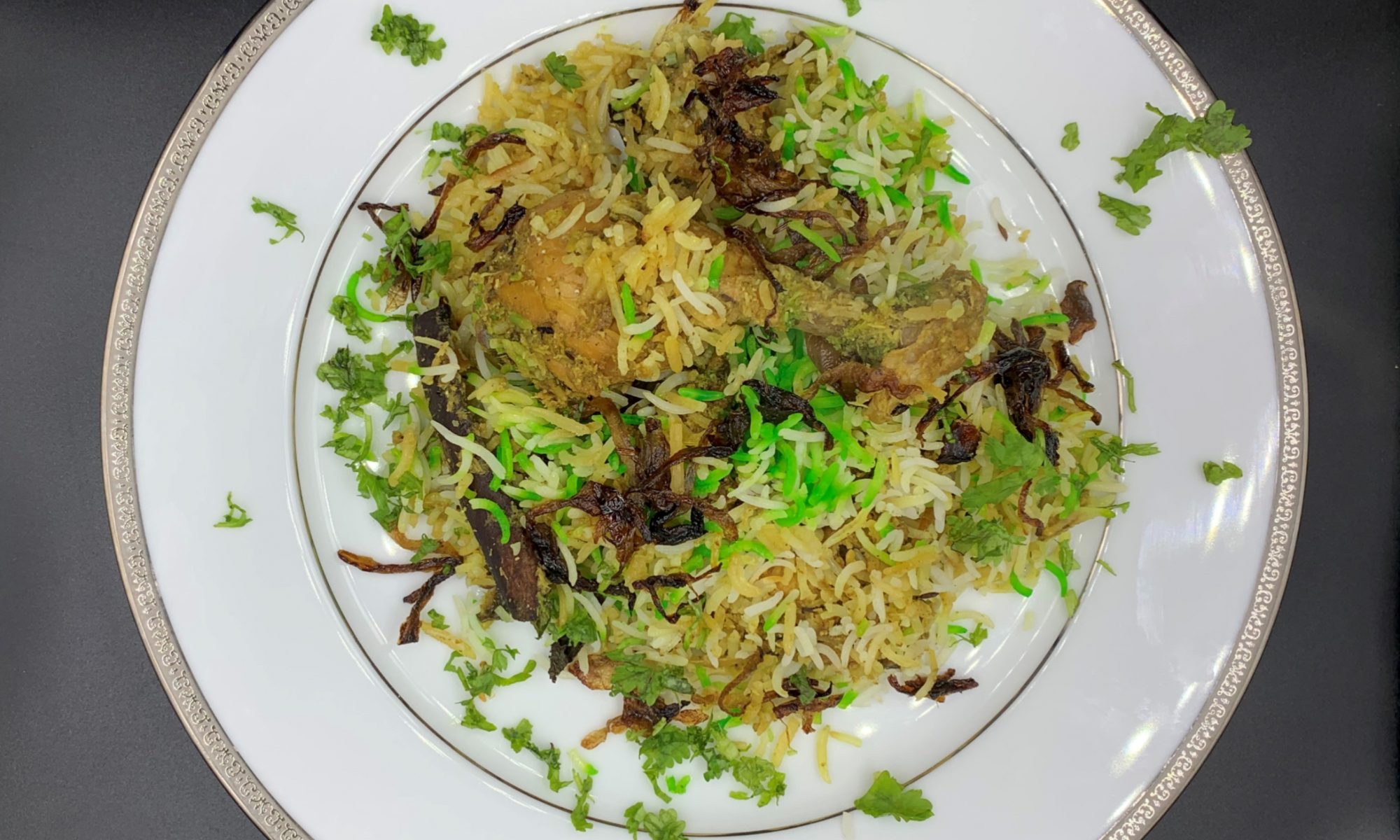
Hyderabad has numerous varieties especially when it comes to Biryanis. I have tried making a wide range of different styles of Hyderabadi Biryanis. Each one has its own distinct flavor and ingredients. I always love how beautifully the heritage of Nizams is displayed in Hyderabadi food.
The dishes are not just rich in ingredients but also the recipes show how rich the food culture has been with the Nizams. We always hear stories of how generous the Nizams were when it came to entertaining and welcoming their guests. How lavish their Dastarkhaan or tables were. The curries, Haleem, so many varieties of sweet dishes that are served with oodles of dry fruits and cooked in clarified Butter are evidence of how much effort the Nizams made their Khansamas/chefs put into food.
The Nizams were very influential. The history showcases the rich taste not just in Gems and Jewelry, but also in food. The use of Milk solids, Ghee, Dry fruits of different kinds is pretty common in most dishes. This dish has a paste of poppy seeds, cashews and coconut. Though the spice level isn’t too high, the Biryani uses a paste of green chilies and you can always increase the green chilies if you wish to make it spicier. Using Kewra with food color makes the Biryani smell rich and inviting as well. Besides that the Biryani is pretty easy to make. This dish is great for Beginners too. Enjoy!!!
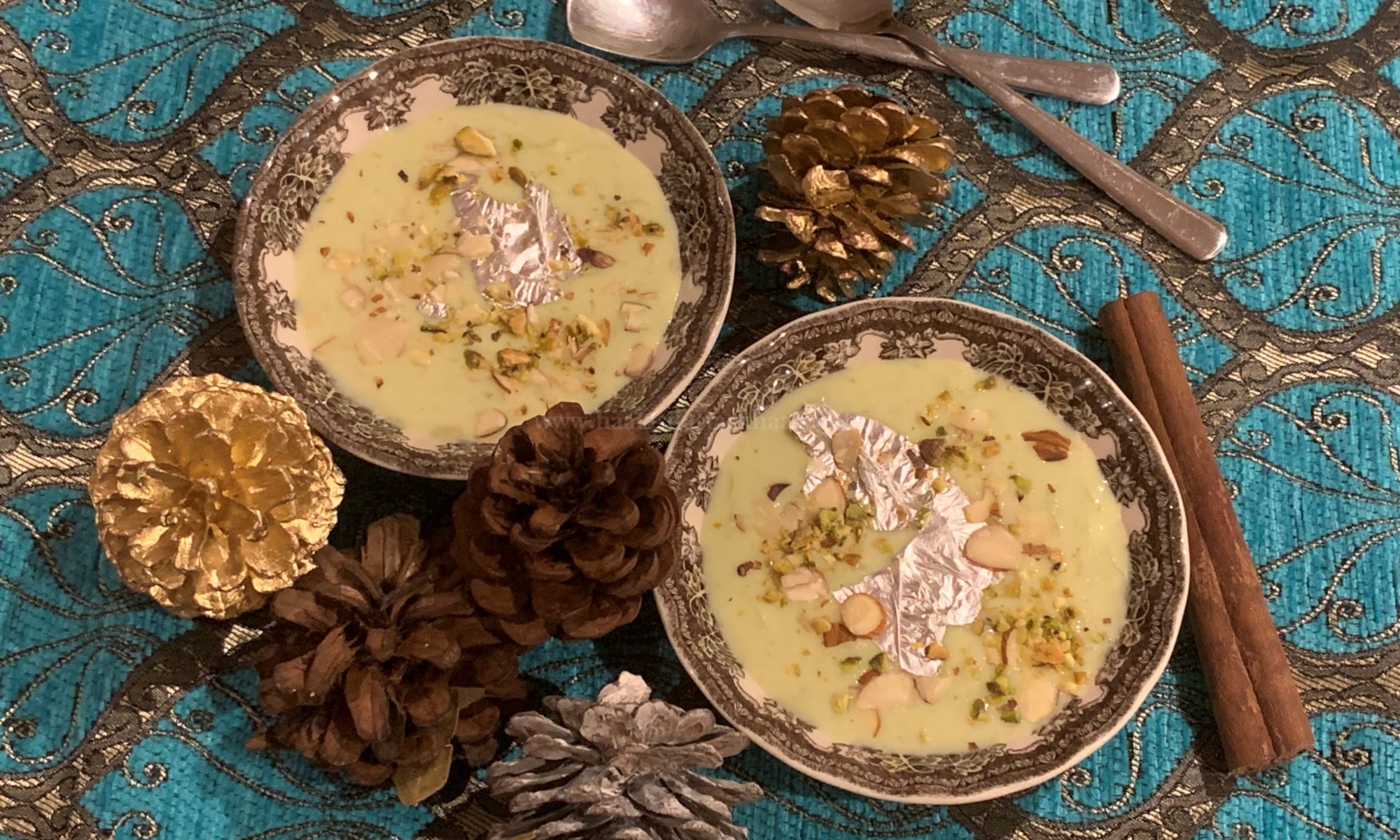
Kheer originated from Mughlai kitchens of India and is an important sweet delicacy for Muslims of India, Pakistan and Bangladesh especially during Eid or any other special celebrations. Other similar dishes like Payasam or Kheer originated in the kitchens of imperial Muslim rulers of India and is an important sweet delicacy for Muslims of India, especially during Eid or any other celebrations. … Other terms like Payasam or Payesh ( are inspired from Kheer and the names have been derived from the Sanskrit word Payasa or Payasam, which also means “milk”.
Kheer has been one of my most favorite desserts ever. Every Eid my Mom would make Rice Kheer which I always believed was the best Kheer I have ever had. Muslims know that its a real chaos when you find out around 11 PM that its Eid the next and women in the family have to start preparing. Almost the whole night passes in prepping for the next day and out of all the work, preparing Kheer has always been the most tedious and tiring of all. Probably making a small batch wouldn’t have been painful, but when you have a small close family of close relatives that reaches 100+ plus add up all distant relatives and friends who come over to meet and greet. So, Kheer is something that’s not just popular but also served to everyone, vegetarians and non vegetarians on Eid, so you can’t really afford to run short.
So, learning how to make my basic Kheer came from my mom. Cooking the milk on low to medium heat, stirring it constantly for almost 3 hours, reducing it to half the original quantity is always the basic to any delicious Kheer. But to my despair, Mr. Parveez doesn’t like Rice Kheer much. In fact, he never liked any Kheer when we got together, but with time I got him into loving Sheer Khurma/seviyaan Kheer, but not the rice one.
Anyways, I always hear people talking about Apple Kheer or Potato Kheer but I couldn’t ever get down to trying. Carrot Kheer or Gajrela was my mom’s go to dishes during Ramadan. I never tried finding out the reason why but may be she fely that this was the easiest way to incorporate some veggie and milk into her kids system while we fasted, I guess. So, after me successfully making Lauki ka Halwa, I wanted to try making the Kheer. It came out fabulous and I think for everyone who even doesn’t like Lauki would love it.
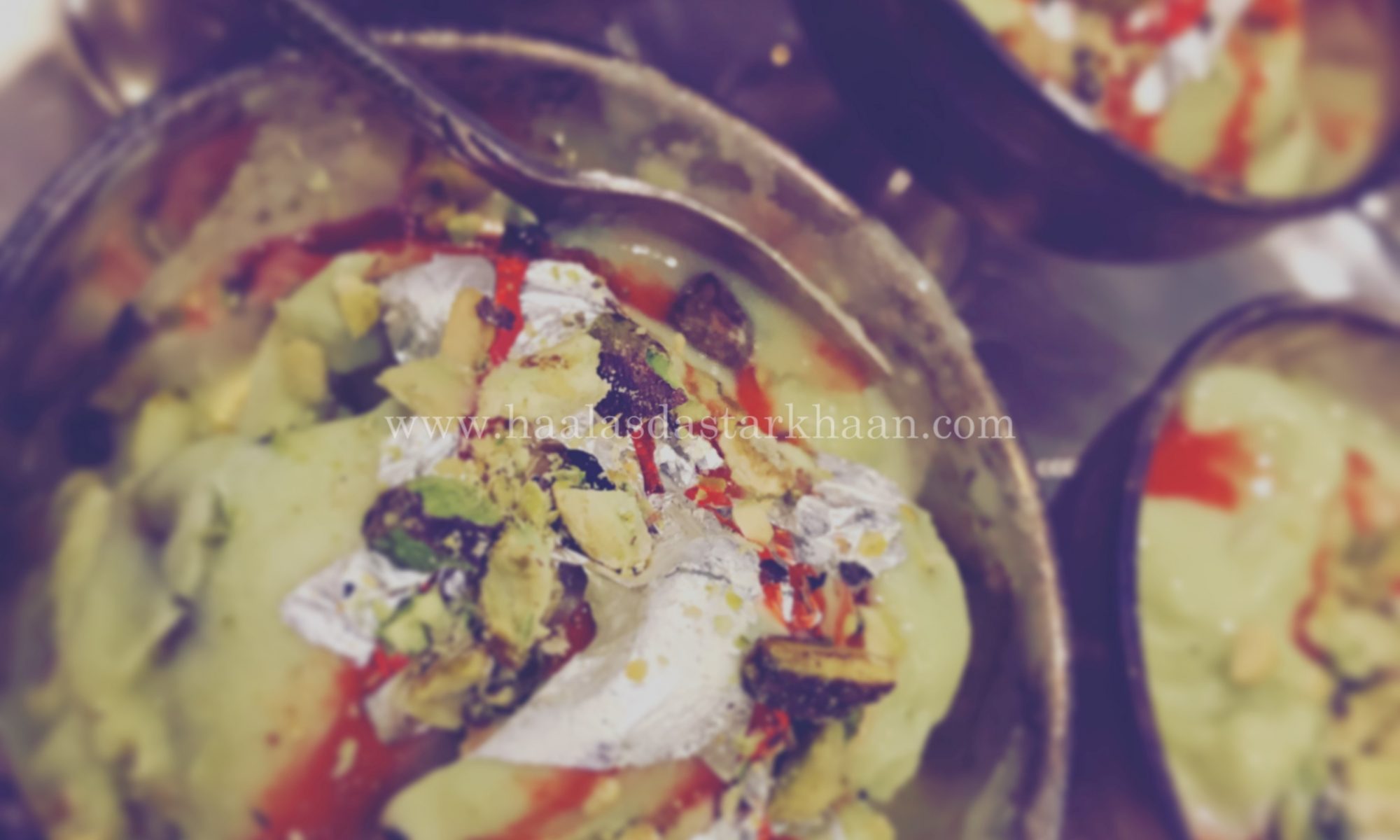
The wonderful world of cold desserts and the version of ice creams served in India “Kulfi”. The word Kulfi or Qulfi is an Indian word derived from the Persian word “Qufli” which means “covered cup”. The dessert was likely originated during the era of the Mughal Empire in the 16th century. The mixture of milk, sugar and nuts. Kulfi is a gifted recipe from the Middle eastern travelers and settlers to India and neighboring countries. Along with so many architectural gifts to India, like the Taj mahal, which even till date makes our country so proud and has millions of visitors travel India only to see Taj Mahal once in their lifetime and so many gorgeous forts, along with Red Fort where the PM addresses the nation every year are all an awesome example of Mughal architectural skill.
Coming back the Kulfi, Indian cuisine were not aware of using Orange blossom, Rose water, saffron or a wide variety of dry fruits in the cuisine. The Mughals while introducing their cuisines and blending them with Indian flavors resulted in wide variety of Biryanis, Kebabs, curries and sweet dishes including Gulab Jamun, Jalebi and Rabri to name a few and of course, Kulfi.
This sweet dish is rich in flavor and can be made in various flavors and is always served cold. It can be served with Basil seeds or sabza that are soaked for an hour, as falooda. It can be flavored while serving as well. I usually like mine to be served with Rose syrup, or the popular Rooh Afza.
This particular recipe has Milk boiled till it thickens and reduces. Added Khoya and cooked further after adding sugar, cardamom powder, saffron, crushed Pistachio, Pistachio flavoring, a little green color and Milk powder to thicken the mixture making the Kulfi more dense and creamier. You can always change the flavors in a Kulfi keeping the base the same.
I also use Silver leaf for decoration, but that’s always optional, but something that makes you home kulfi different from the restaurant and trust me, even better.
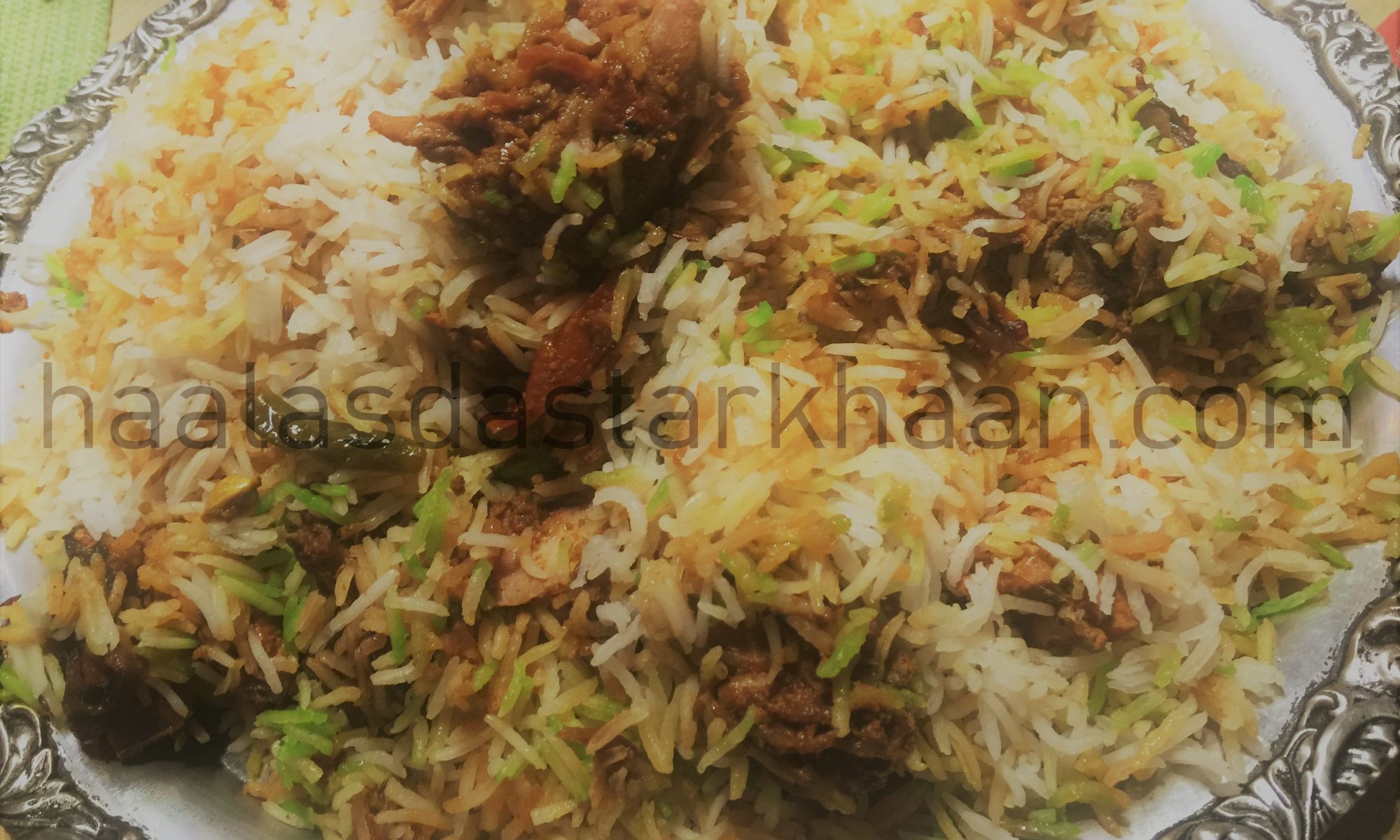
Different Biryanis and different flavors, so much to try and everything so deliciously fantastic that picking one to be my absolute favorite is impossible.
While growing up, I had a distant family and once a year, every Eid to be precise, they would have a gathering at their place. The lady was from Delhi and a fantastic cook. The best thing was that she always made a dish, that was uncommon in our families. It was always some new variety that belonged to Delhi and other states. For many of you, who aren’t aware, the non vegetarian dishes cooked in one state of India differ completely from the ones cooked in another state, even if we are neighboring state. So, I was 12 and that was the first time I tried Achaari chicken curry.
Now, I am a big fan of Achaar/ pickle. When we got married, I would drive Mr. Parveez crazy with the amount of pickle I consumed. So, to a person like me, eating chicken in Achaar flavor was indeed food from heaven. I really laugh at myself when I remember how I got after my mother to find the recipe and make the dish, which she did and it was always one of favorites. But, the story doesn’t end here.
Now when I am all set to try out new recipes, one fine day I decided to make Biryani out of this masala. As much as the idea sounds absurd and crazy, the Biryani came out delicious. The yakhni has strong flavor of fennel seeds and fenugreek. Its isn’t sour as what usually pickles are, so don’t fear trying out this recipe imagining the taste of boiled rice and pickle, coz it isn’t the same taste. The spice level is medium and i have had loads of people who pick this one to be one of the first dishes they learnt how to cook from me.
Its one of my best food experiments ever. Please feel free to ask if you’d like to make it with mutton/fish.
